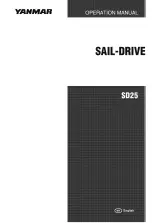
Controls and Features
FRONT PANEL
(refer to Fig. 1 on page 1)
1. Power
Switch:
This switch is used to turn power ON/OFF
2. Power
Indicator:
This lights up when power is ON
3.
Master Level Control:
This control increases or decreases the overall level. Full master level corresponds to 0 dB.
REAR PANEL
(refer to Fig. 2 on page 1)
•
GAIN:
The SM 50Ak has a variable gain control. The gain is factory set to 0 dB. With the level control on the front panel set to
maximum position (fully clockwise) and an input signal of -6 dBu, the SM 50Ak will typically produce an output of 109 dB SPL at
1 meter in an anechoic environment.
The variable gain setting allows the user to get a good sensitivity match when using either professional or semi-professional
equipment. Using the gain control, the monitor can be set for inputs of -6 dBu to +6 dBu.
•
LF SWITCH (BASS ROLL-OFF):
Switch 1 when ON introduces a low frequency roll-off into the response curve. The effect of the
roll-off (6 dB per octave @ 100 Hz) is shown in Fig. 6 on page 6.
For many applications, removal of deep bass content allows you to raise the overall output level, permitting LOUD mixing. But,
keep in mind that removing deep bass content from monitors may actually result in an inaccurate bass reproduction.
•
ROOM COMPENSATION (LF) (BASS TILTS):
Switches 2 & 3 when ON activates a filter @ 80 Hz, to reduce the low frequency
output by 2 dB & 4 dB respectively. Engaging both switches produces a 6 dB roll-off. These functions can be used to compensate
for the build-up of low frequencies that occur when the speakers are placed near walls or corners, or on the workbench surfaces.
When the monitors are at a free standing position, away from walls and workbenches turn these switches OFF. The changes in
low frequency response using switches 2 & 3 are shown in Fig. 7 on page 6.
•
ROOM COMPENSATION (HF) (HF TILTS):
Switch 4 introduces a high frequency response shelf cut of 2 dB above 4 kHz. This
feature can be used if the testing room is 'fairly live' or the listening position is close to the speakers. But generally not used for
applications in 'dead' rooms. The change in the frequency response when switch 4 is ON can be seen in Fig. 8 on page 6.
After you've studied the SM 50Ak's rear panel switches, do not hesitate to experiment with the settings and also monitor placement to get
the best results.
Page 2
S
N
O
D
N
Y E
O
SM 50Ak


























